However, a fracture may also be the result of some medical conditions that weaken the bones. These include osteoporosis and some types of cancer. The medical term for these is a pathological fracture. In this article, we detail the different types of bone fractures, their various causes, and the treatments available.
What is a bone fracture?
A bone fracture is a full or partial break in the continuity of bone tissue. Fractures can occur in any bone in the body. There are several different ways in which a bone can fracture. For example, a closed fracture is a break to the bone that does not damage surrounding tissue or tear through the skin. By contrast, a compound fracture is one that damages surrounding tissue and penetrates the skin. Compound fractures are generally more serious than simple fractures due to the risk of infection.
Types of fracture
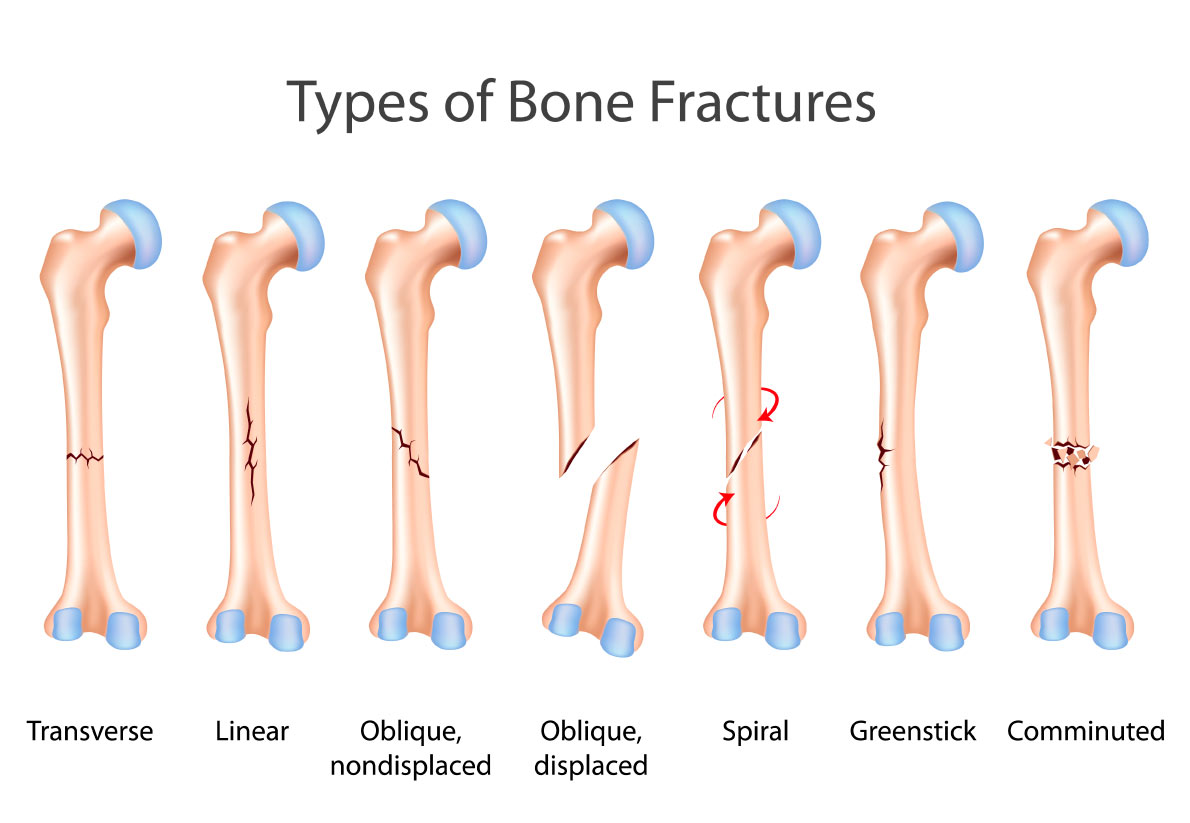
- Avulsion fracture: A muscle or ligament pulls on the bone, fracturing it.
- Comminuted fracture: An impact shatters the bone into many pieces.
- Compression, or crush, fracture: This generally occurs in the spongy bone in the spine. For example, the front portion of a vertebra in the spine may collapse due to osteoporosis.
- Fracture dislocation: This occurs when a joint dislocates, and one of the bones of the joint fractures.
- Greenstick fracture: The bone partly fractures on one side but does not break completely, because the rest of the bone can bend.
- Hairline fracture: This is a thin, partial fracture of the bone.
- Impacted fracture: When a bone fractures, a piece of the bone may impact another bone.
- Intra-articular fracture: This occurs when a fracture extends into the surface of a joint.
- Longitudinal fracture: This is when the fracture extends along the length of the bone.
- Oblique fracture: An oblique fracture is one that occurs opposite to a bone’s long axis.
- Pathological fracture: This occurs when an underlying condition weakens the bone and causes a fracture.
- Spiral fracture: Here, at least one part of the bone twists during a break.
- Stress fracture: Repeated stress and strain can fracture a bone. This is commonTrusted Source among athletes.
- Transverse fracture: This is a straight break across the bone.
Symptoms
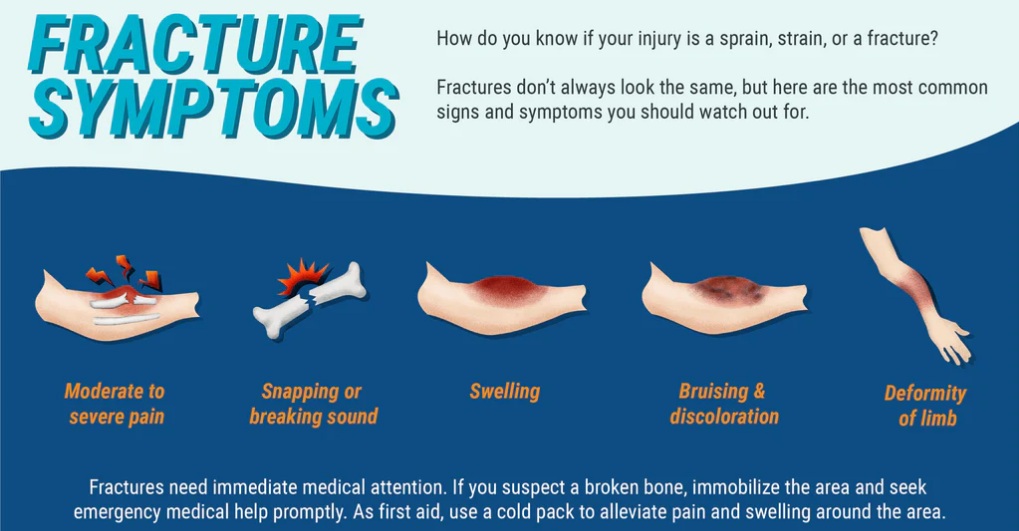
Symptoms of a fracture vary depending on its location, a person’s age and general health, and the severity of the injury. However, people with a bone fracture will typically experience some of the following:
- pain
- swelling
- bruising
- discolored skin around the affected area
- protrusion of the affected area at an unusual angle
- inability to put weight on the injured area
- inability to move the affected area
- a grating sensation in the affected bone or joint
- bleeding if it is an open fracture
Causes
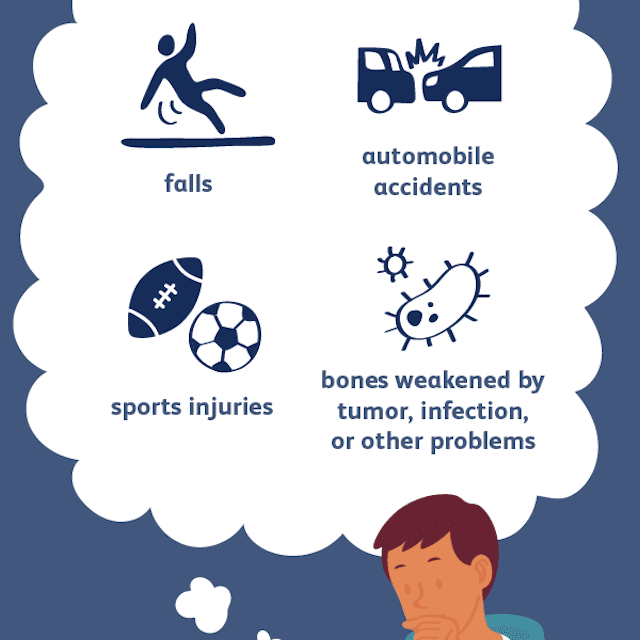
Healthy bones are extremely resilient and can withstand surprisingly powerful impacts. However, under enough force, they may crack or break.
Physical trauma, overuse, and health conditions that weaken the bones, such as osteoporosis, are the leading causes of bone fractures. Other factors can also increase an individual’s risk of sustaining fractures. A person’s bones will typically weaken with age, which increases the risk of them breaking. As a person ages, the likelihood of their developing a condition that weakens the bones is also greater.
Diagnosis
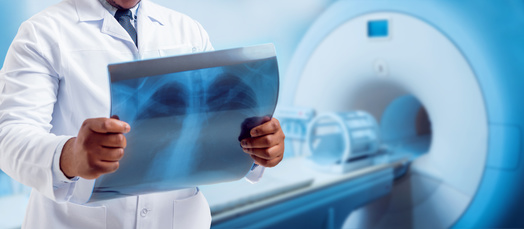
A doctor will inquire about the circumstances that led to a person’s fracture. They will then carry out a physical examination to reach a diagnosis. Often, they will order an X-ray, and in some cases, an MRI or CT scan, to fully assess the fracture.
Treatment

Bone healing is a natural process that, in most cases, will occur naturally. Therefore, treatment typically focuses on providing the injured bone with the best circumstances for healing, and ensuring optimal future function. For the natural healing process to begin, a doctor will reduce the fracture. This involves lining up the ends of the broken bones. In smaller fractures, a doctor can do this by manipulating the affected area externally. However, in some instances, this may require surgery.
How are bone fractures treated?
If your fracture is mild and your bones did not move far out of place (if it’s non-displaced), you might only need a splint or cast. Splinting usually lasts for three to five weeks. If you need a cast, it will likely be for longer, typically six to eight weeks. In both cases you’ll likely need follow up X-rays to make sure your bones are healing correctly.
Immobilization
If your fracture is mild and your bones did not move far out of place (if it’s non-displaced), you might only need a splint or cast. Splinting usually lasts for three to five weeks. If you need a cast, it will likely be for longer, typically six to eight weeks. In both cases you’ll likely need follow up X-rays to make sure your bones are healing correctly.
Closed reduction
More severe breaks require a closed reduction to set (realign) your bones. During this non-surgical procedure, your provider will physically push and pull your body on the outside to line up your broken bones inside you. To prevent you from feeling pain during the procedure you’ll receive one of the following:
- Local anesthetic to numb the area around your fracture.
- Sedatives to relax your whole body.
- General anesthesia to make you sleep through the procedure.
After the closed reduction, your provider will put you in a splint or cast.
Bone fracture surgery
Some bone fractures require surgery. Depending on which type of fracture you have — and how badly your bones are damaged — there are few techniques your surgeon might use.
Internal fixation
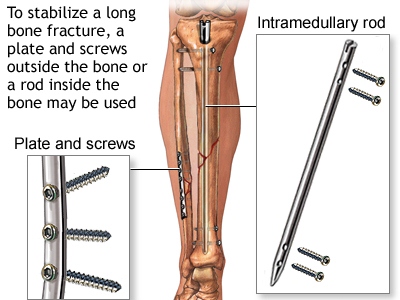
Your surgeon will realign (set) your bones to their correct position and then secure them in place so they can heal and grow back together. They usually perform what’s called an internal fixation, which means your surgeon inserts pieces of metal into your bone to hold it in place while it heals. You’ll need to limit how much you use that part of your body to make sure your bone can fully heal.
Internal fixation techniques include:
- Rods: A rod inserted through the center of your bone that runs from top-to-bottom.
- Plates and screws: Metal plates screwed into your bone to hold the pieces together in place.
- Pins and wires: Pins and wires hold pieces of bone in place that are too small for other fasteners. They’re typically used at the same time as either rods or plates.
External fixation
You might need an external fixation. Your surgeon will put screws in your bone on either side of the fracture inside your body then connect them to a brace or bracket around the bone outside your body. This is usually a temporary way to stabilize your fracture and give it time to begin healing before you have an internal fixation.

Arthroplasty
If you fracture a joint (like your hip, shoulder, elbow or knee) you might need an arthroplasty (joint replacement). Your surgeon will remove the damaged joint and replace it with an artificial joint. The artificial joint (prosthesis) can be metal, ceramic or heavy-duty plastic. The new joint will look like your natural joint and move in a similar way.
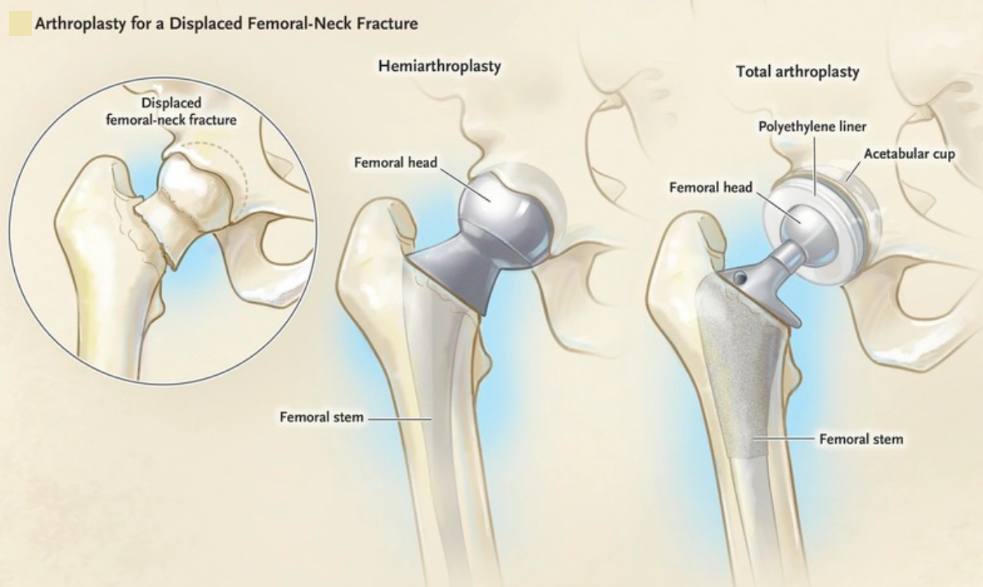
Bone grafting
You might need bone grafting if your fracture is severely displaced or if your bone isn’t healing back together as well as it should. Your surgeon will insert additional bone tissue to rejoin your fractured bone. After that, they’ll usually perform an internal fixation to hold the pieces together while your bone regrows. Bone grafts can come from a few sources:
- Internally from somewhere else in your body — usually the top of your hip bone.
- An external donor.
- An artificial replacement piece
You might need bone grafting if your fracture is severely displaced or if your bone isn’t healing back together as well as it should. Your surgeon will insert additional bone tissue to rejoin your fractured bone. After that, they’ll usually perform an internal fixation to hold the pieces together while your bone regrows. Bone grafts can come from a few sources:
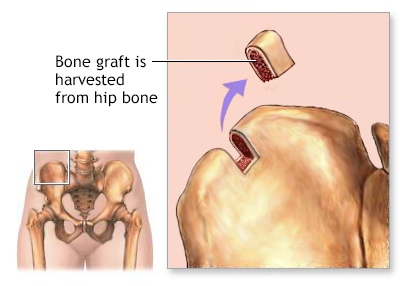
Meet Our Doctors

Dr. Nitin Thakkar
M.S (Ortho)

Dr. Shweta Thakkar
DMRD, DNB (Radio-Diagnosis)
